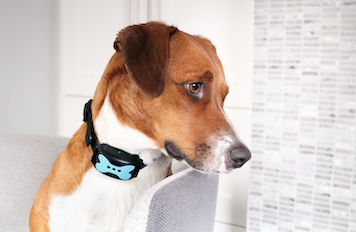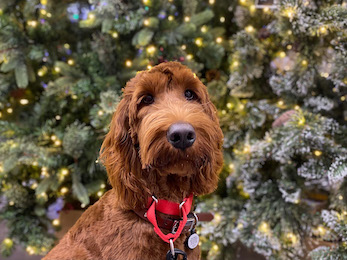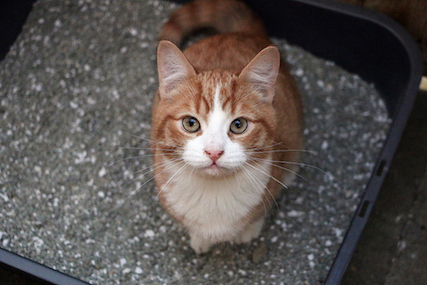Bringing a new puppy home is such an exciting time for any family! The fun, laughter, and pure joy that a puppy radiates is unmatched, in my opinion. To keep the transition of bringing your puppy home relatively stress free, it helps to plan for and know what to expect, behaviorally. As a Certified Applied Animal Behaviorist, I like to prepare my clients, so they know some of my initial steps in training when it comes to bringing home a puppy: socialization, potty training, toy play, and automatic sit. If your puppy can master these skills, you will have a friendly, housebroken dog that doesn’t chew, play bite, or jump on guests!
Socialization
Proper socialization might be the most important skill to teach your puppy. It means that your puppy isn’t simply exposed, but that they have a good experience when being exposed to new people, animals, and places. The socialization period for a puppy is thought to be 3-12 weeks of age and is a critical time in any dog’s development. I prefer to extend that period through late puppyhood (5-8 months) and into adolescents (8-12 months). I continue to keep a close eye on any fear-related behaviors as puppies transition into adulthood (1-2 years).
Before you Get Your Puppy (birth to 8 weeks)
Socialization begins well before your puppy enters your home. It’s important that your puppy 1) be raised with their littermates and mother, 2) have positive, regular experiences with men, women, and children, and 3) be kept indoors. They need to develop critical social skills that only their littermates and mother can teach. Bite inhibition (i.e., appropriate bite force) and appropriate play with other dogs are some of the most important skills littermates and mothers can teach. Positive and regular interactions with a variety of people encourage your puppy to remain relaxed and confident rather than fearful when interacting with a variety of people. It’s ideal if your puppy is raised with a family or with an individual who is regularly exposing the litter to a variety of people, including children. Puppies should be kept indoors such that they see, hear, and smell things that are typical of a home. These normal, everyday sights, sounds, and smells, will prepare your puppy for similar sights, sounds, and smells of your home.
Puppies should not be taken from their litter prior to 8 weeks of age. If purchasing your puppy from a breeder, I do not recommend buying them from a breeder that will release a puppy at 6-7 weeks. Instead, find a breeder or rescue group who keeps the litter together until they are 8-9 weeks of age.
Of course, sometimes a less than ideal situation arises due to the death of the mother or other puppies. In those cases, puppies are often placed in foster homes with other pets and caring foster families. If that is the case for your puppy, don’t worry! Puppies are rescued every day from a sad and similar situation. It simply means the need for socialization from 8-12 weeks is even more critical.
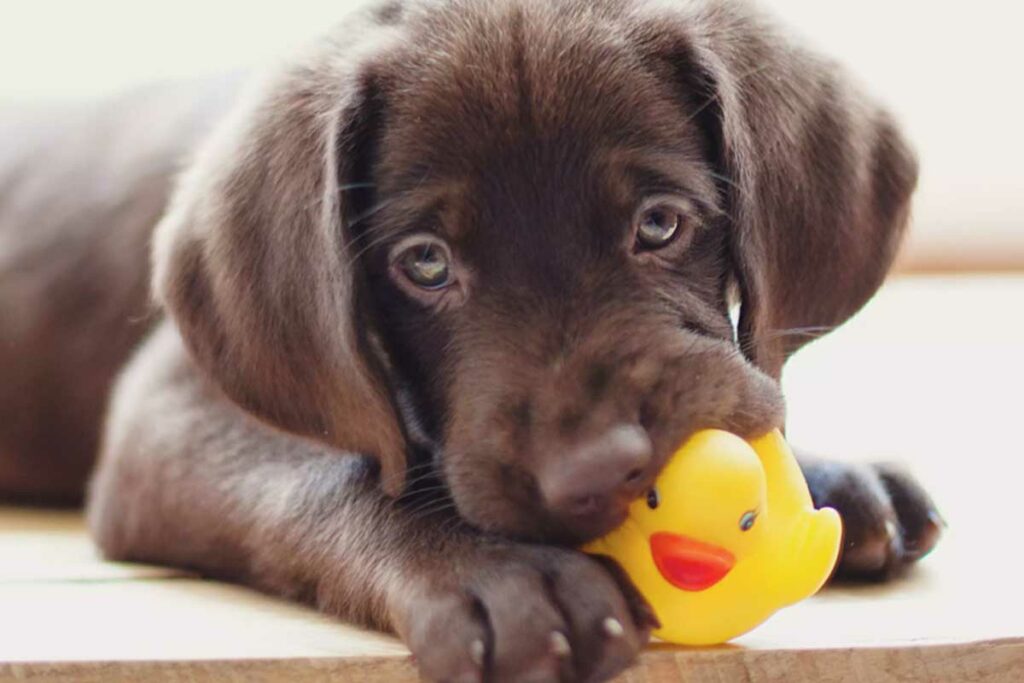
Once Your Puppy Comes Home (8 weeks +)
Once your puppy comes home, you should begin safely exposing them to a variety of people, other pets (especially other dogs), and places. I recommend your puppy meets 25-50 new people and dogs per week. If your puppy came from an ideal environment and isn’t prone to fear or aggression, the minimum of 25 should be sufficient. If your puppy came from a less than ideal environment or is prone to fear or aggression, I recommend the maximum number of new people and dogs listed above.
Praising and feeding small treats is an easy way to encourage your puppy and generally is enough to make the experience positive. It’s important that interactions with children be monitored such that your puppy develops a love for children. If children express interest in meeting your puppy, they should feed your puppy treats when you are out and about. This will create a positive association with new and different kiddos.
Properly socializing your puppy to other animals and especially other dogs has the potential to reduce stress and ensure more relaxed walks in your neighborhood or local park for years to come. Off leash play is a critical first step. Animals your puppy interacts with should be vaccinated and friendly. It’s important that playtime is closely monitored and that your puppy isn’t bullying or being bullied. Break up the play if you feel that one puppy is bullying the next.
Dog parks can be an easy way to access a variety of dogs for off leash play. For health purposes though, I do not recommend taking your young puppy to a dog park until they are fully vaccinated. Even then, be sure you are going to a park you are familiar with, and I recommend going at a time when regular, not irregular, attendants are there (i.e., not the first beautiful Saturday morning of spring). Be sure the other dogs are having safe and friendly interactions rather than fighting. It’s helpful to stand outside and observe for a few minutes prior to heading into the park. If you find that there is a dog that is a bit of a bully, wait until that dog leaves.
If you’re struggling to get the recommended number of dog interactions per week, a local on-leash park that is clean might be sufficient. Although it’s critical that your puppy interacts off-leash with other healthy and friendly dogs, seeing another dog on leash in proximity may have to serve as the recommended 25-50 new dogs. Continue off leash play with a small variety of familiar dogs several days per week.
You might consider places you plan to take your puppy as an adult. If it’s a safe location for your puppy, begin taking your puppy there while they are young. Maybe you enjoy a local farmer’s market or coffee shop? A local outdoor restaurant? How about a boat ride? Wherever the location, make it a fun experience and your puppy will grow to love your favorite places too!
Throughout your puppy’s socialization period and into adolescence, if a scary or unpleasant event happens, and it inevitably will, be sure to have treats available to counteract the scary event. Place the treats in your puppy’s mouth quickly and continuously until they appear relaxed. It’s more helpful for your puppy to keep things upbeat with praise and continue feeding rather than attempt to comfort or coddle. There is no need for your puppy to look at you or comply with a command. Feeding them pairs something pleasant with something seemingly aversive. Be sure to note the context under which your puppy became fearful and repeat it with less intensity and with tasty treats several times in the future.
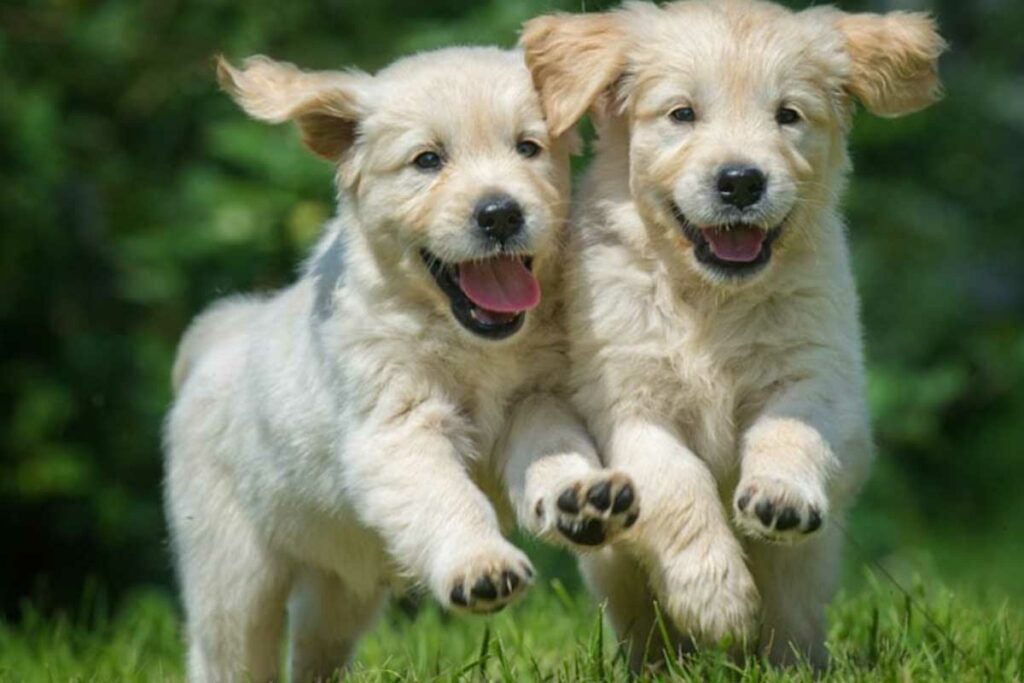
You might be able to predict scary or slightly painful experiences your puppy might have. In those cases, bring a hungry puppy and lots of tasty treats or their meal. For example, if it is your puppy’s first veterinary appointment, bring treats or dog food and scatter it on the table before you place your puppy on the table. You should remain near your puppy’s face if shots need to be given. As your puppy’s veterinarian examines or gives your puppy a shot, feed tasty treats to pair something pleasant with a potentially scary event. Similar exercises could be done at home in preparing for a nail trim or grooming.
By properly socializing your puppy to new people, dogs, and places and later identifying areas of concern, you will be well on your way to tackling one of the most important aspects of bringing your puppy home! Next up: puppy potty training!
Puppy Potty Training
Potty training your puppy is also incredibly important! You should begin as soon as your puppy comes home (or before, if possible). A potty-training program involves multiple components.
1. Monitor or confine your puppy:
The first step is keeping a close eye on your puppy. In order to do so, you’ll need a small 4-6 foot leash (a leash made of chain if your puppy chews) and a crate that is large enough to stand up and turn around in, but not so large your puppy will eliminate in the crate. It’s important that you can monitor your puppy and see every time they potty—whether inside or outside! In order to monitor your puppy closely, I recommend having them tethered to something stationary in the room you are in. This helps in preventing them from sneaking off to potty in another room. If your puppy is off the tether and you can watch closely, they should drag the leash. If you’re unable to closely watch your puppy, they should be confined to a crate or other space they will keep clean.
2. Create a food and water schedule:
It’s important to create a food and water schedule for your puppy so you can reliably predict when they have to potty. I recommend offering water every two hours, not constant access, and keeping the water bowl outdoors. When your puppy drinks water outside, it will stimulate them to urinate. After your puppy drinks, pick up the water, and take them to the area where you want them to potty. Stay there for about 15 minutes. Generally, water should be cut off 2 hours prior to leaving for long periods of time or bedtime. For example, if you plan to go to bed at 10:00 pm, your puppy should not have water past 8:00 pm.
Food generally takes about 8 hours to pass through a puppy and your veterinarian will recommend feeding your puppy 2-3 times per day. Your puppy will likely eliminate after eating, pushing out the meal prior. If your puppy is struggling to make it overnight and defecates in the middle of the night, I recommend pushing their final meal of the day to an hour or two before bedtime. This will allow them to hold it while sleeping 8 hours. From my experience, with the proper food and water schedule, most puppies can make it 8 hours overnight by 9-10 weeks of age. In addition to creating a food and water schedule, I recommend puppy owners record when their puppy eliminates. I’ve included a sample schedule to serve as an example.
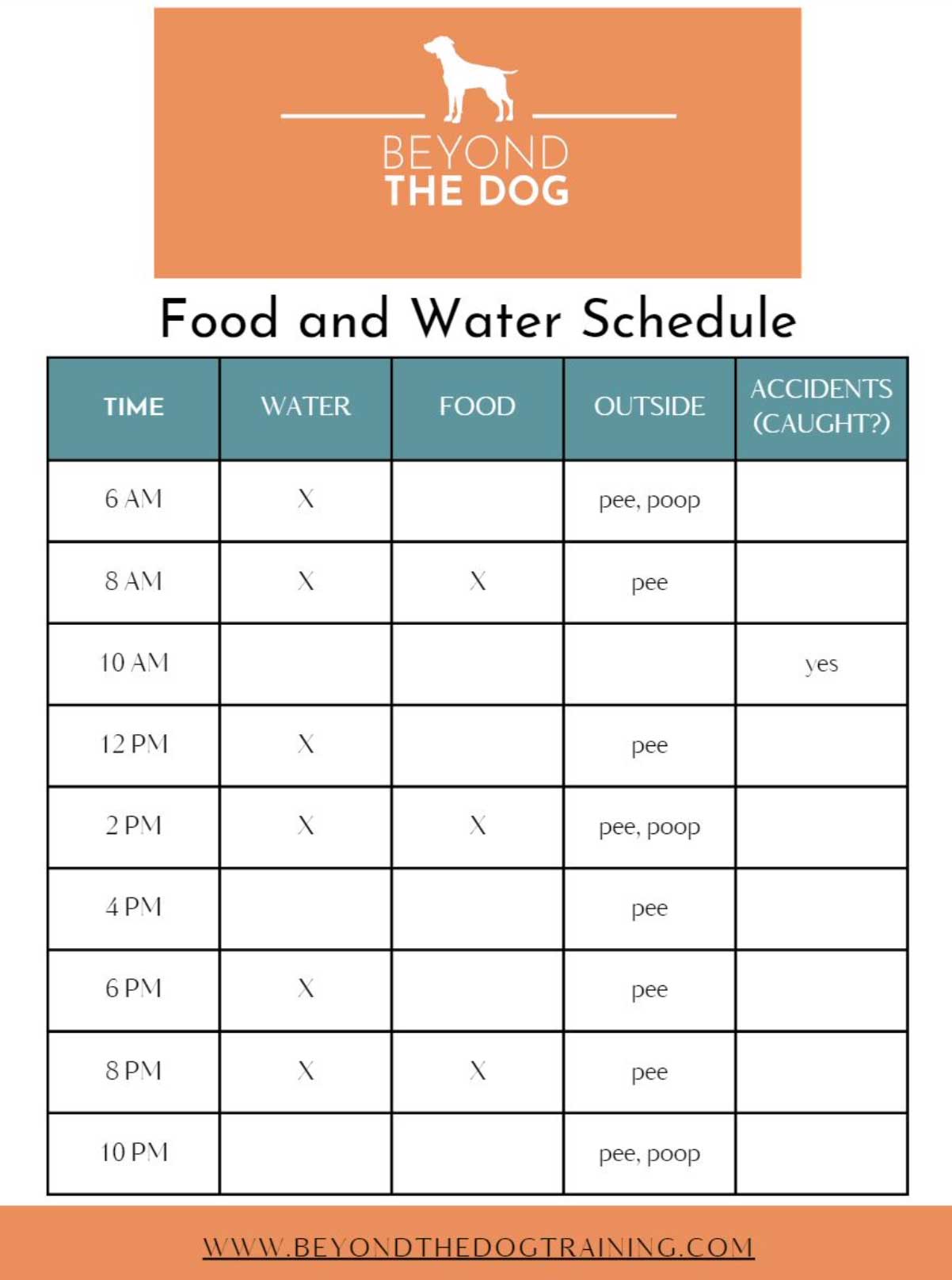
3. Reward your puppy for going potty outside and interrupt them for going potty inside:
When it’s time to take your puppy outside to go potty, have them walk rather than carrying them. It’s important they know how to get from anywhere inside your home to the potty area. You may need to guide them there on the leash they are dragging or coax them verbally. On your way outside, be sure to bring a small handful of tasty treats. If it’s time for water, give them access to water prior to heading to the grass. Once on the grass, ignore your puppy allowing them to concentrate on going potty. Sometimes puppies will realize you have treats and repeatedly jump on you. Just walk away and ignore them. I find it helpful to slowly wander around to encourage your puppy to move around, smelling the grass. Continue ignoring your puppy until it’s obvious they are finished eliminating. I usually wait for a puppy to stand up, before I begin praising and give them three treats, one right after the other. I recommend staying outside for 10-15 minutes even if they do potty right away. If you find that your puppy is urinating several times during those 10-15 minutes, consult with your veterinarian about a possible urinalysis. It’s not uncommon for puppies to develop a urinary tract infection.
If your puppy eliminates inside and you catch them while they are going, interrupt them going potty with a verbal reprimand (e.g., a loud “NO”). Guide them immediately outside and to the potty area. If they potty outside, reward them with the three treats again. It is critical that if your puppy potties inside your home that you see and interrupt it!
By following the steps outlined above, you’ll be well on your way to having a potty-trained puppy. The goal is to get started on the right foot prior to your puppy having accidents in the home. Don’t stress over a couple of indoor accidents especially if you are able to interrupt them. What you should avoid is weeks of indoor accidents without interruption. If you adhere to the guidelines above, you should have a potty-trained puppy in as little as 30 days. While there may not be any accidents in your home, I do recommend crating your puppy while you are away until you are sure they won’t eliminate in the house. Depending on your puppy’s breed, bladder control, and behavioral history, this can happen as early as 6-7 months.
Teaching Your Puppy to Chew on Toys
Two problem behaviors that occur in nearly all puppies is play biting and inappropriate chewing. Although functionally different behaviors, the first step in reducing both problem behaviors is to teach appropriate toy play. For this you’ll need 10-15 appropriate toys. I recommend toys that don’t resemble anything in your home and are indestructible. I avoid stuffed animals, rope toys, and rawhide. Instead, I encourage my clients to purchase Kongs, Nylabones, cow bones, and deer antlers. These toys are an initial investment but save my clients in the long run.
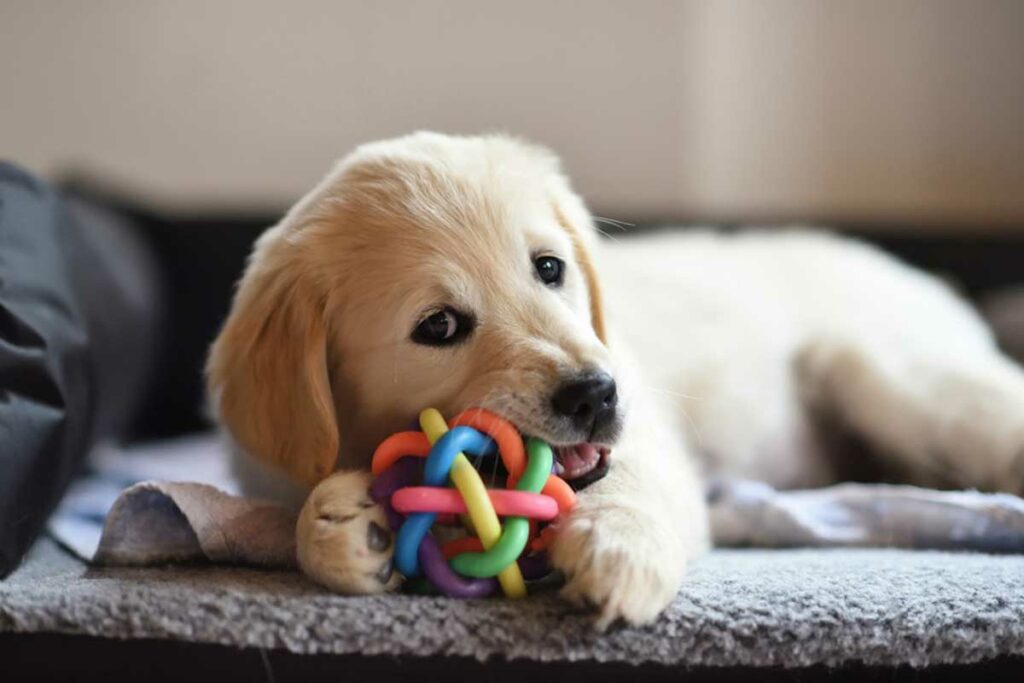
One of the easiest ways to teach your puppy to play with toys is to feed half of their meals out of toys (see my automatic sit section below for hand feeding the other half). Moisten your puppy’s food with a bit of water creating a mash, fill the Kong, and partially freeze it. When it is time for your puppy’s meal use the stuffed Kong instead of a bowl. Make sure to continue feeding the same volume of food each meal. For this reason, I always have clients purchase the large or extra-large Kongs, regardless of the puppy’s size. This will not only help teach your puppy to chew on toys, but also serve as indoor enrichment for your puppy, keeping them physically active and independently engaged!
The other way I teach puppies to chew on toys is a little more effortful, but lots of fun and great for children to get involved in. Using a 4-6 ft leash, tether your puppy to something stationary. Allow your puppy to have access to about 5 toys. Sit just out of reach. When your puppy picks up a toy, start petting and praising. If your puppy’s mouth comes off the toy, stop petting and praising. If your puppy isn’t interested in a toy, it can help to hold the toy and tease them a bit with it. Move it around, starting and stopping quickly. I recommend teaching your puppy in 3 sessions or so before getting kids involved. Children over the age of 5 can easily work on toys play with their puppy, further strengthening their bond. This will help teach puppies to play with children by chewing on toys rather than biting. Once they’ve mastered toy play, kiddos often find it fun to start teaching fetch! If you’re struggling to teach your puppy to chew on toys, check out our video.
Teaching your puppy to chew on toys will help compete with both chewing and play biting. Afterall, if your puppy is chewing on a toy they cannot chew on your stuff or on you. I find this to be an invaluable skill for all puppies to develop and continue through adulthood!
Teaching Your Puppy to Autosit
The final behavior I recommend starting with new puppies is an autosit (i.e., automatic sit). An autosit serves to compete with jumping, as well as other problem behaviors, and is an easy behavior to begin. I recommend using the other half of your puppy’s meals (remember, you’ll use the other half feeding out of toys) to teach and maintain an autosit. Hand feeding in this way also helps to create a love of learning for obedience training later.
Put your puppy on a tether just as you have for potty training and teaching toy play. Stand just out of reach and talk to your puppy. Throughout this process, don’t tell your puppy to sit. Often, with some verbal coaxing, they will offer an autosit within a few seconds. If they don’t, you can coax them into a sit by taking some kibble and luring them into a sit. With your palm facing the sky, place your hand near your puppy’s nose and guide them back and into a sit. As soon as your puppy’s bottom touches the ground, immediately give them a piece of food. Be sure to deliver the piece of food quickly such that their bottom remains on the ground. Keep giving food as long as their bottom stays on the ground. As your puppy remains in the sit position for a longer period, slowly start spacing the time in between pieces of food. If they stand up, stop feeding and stand up. Talk to them without touching or feeding and wait for them to autosit again. Once they do, begin the process again by feeding.
An autosit is a great way to get kids involved as well. I recommend doing a few sessions alone with your puppy to get things started. Once your puppy learns “the game” it’s time to get kids ages 5 and older involved. By having your children hand feed your puppy for autositting, jumping on kiddos will be significantly reduced. In addition, in my experience, puppies tend to listen and be more closely bonded to owners who hand feed. This includes kiddos! There is nothing more heartwarming than seeing the joy and happiness on both children’s and puppy’s faces!
Stay focused on socialization, potty training, toy play, and automatic sitting, and you can take pride in shaping your puppy into a well-mannered family member. As these positive behaviors improve, you may find yourself enjoying your puppy even more than you could dream. Puppies and adult dogs have taught me so much both in my personal and professional life. It’s my hope that this is the start of an incredible journey of learning not just for your puppy, but for you too. Afterall, these behaviors are just the start for you and your puppy!

